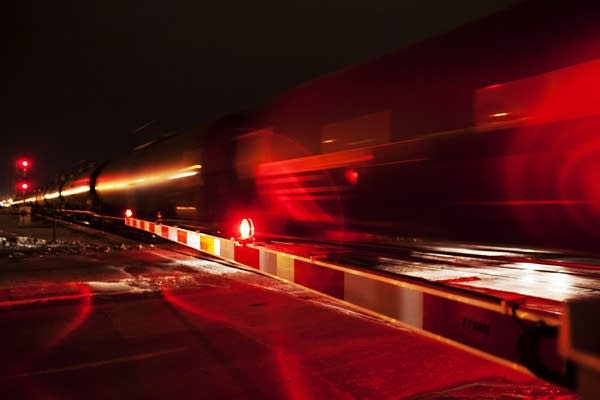As more oil trains roll, local firefighters worry, prepare for the worst

Train traffic is a way of life for drivers and pedestrians in Fargo-Moorhead. Here, a train hauling empty crude oil tankers heads west at a Moorhead crossing on Thursday, Feb. 27, 2014.
Ann Arbor Miller / For MPR News
Go Deeper.
Create an account or log in to save stories.
Like this?
Thanks for liking this story! We have added it to a list of your favorite stories.


